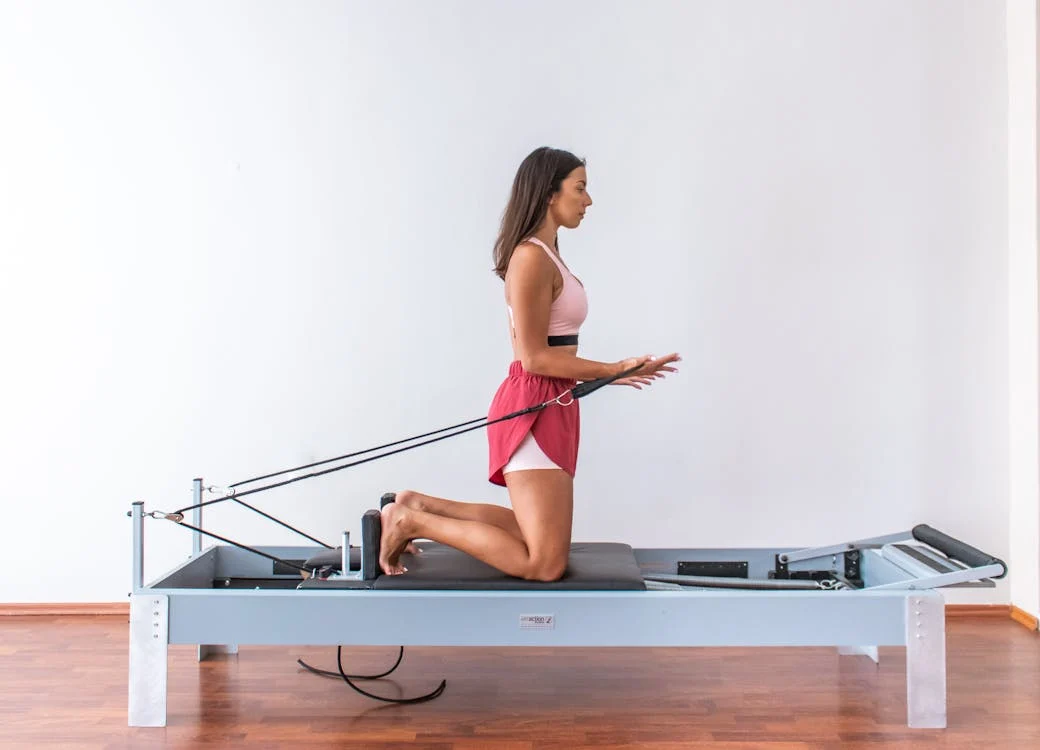We’ve all heard the advice to “push through” workouts, no matter how we feel. But what if your body is telling you to do something different? Enter cycle syncing—a game-changing approach to fitness that aligns your workouts with the natural phases of your menstrual cycle.
Instead of forcing your body to perform the same every day, cycle syncing helps you maximize energy, strength, and recovery by working with your cycle, not against it. Here’s everything you need to know about syncing your fitness to your monthly rhythm.
What Is Cycle Syncing?
Cycle syncing is all about adjusting your diet, exercise, and lifestyle habits to align with the four phases of your menstrual cycle. The idea is that different phases of the cycle require different approaches to training because hormonal fluctuations affect energy, strength, and recovery.
Your menstrual cycle has four phases:
- Menstrual Phase (Days 1-5)
- Follicular Phase (Days 6-14)
- Ovulation Phase (Days 15-17)
- Luteal Phase (Days 18-28)
Each phase has its unique energy and strength levels, and by adjusting your workout plan accordingly, you can optimize performance, reduce burnout, and improve overall well-being.
How to Sync Your Workouts with Your Cycle
1. Menstrual Phase (Days 1-5): Focus on Rest and Light Movement
During menstruation, energy levels tend to be lower. Your body is shedding the uterine lining, so it’s important to take it easy. This is the phase for gentle movements. Think restorative yoga, light stretching, walking, or simply allowing more rest.
- Best workouts: Yoga, walking, light stretching, gentle Pilates
- Tip: Listen to your body and give yourself permission to rest—recovery is key during this phase.
2. Follicular Phase (Days 6-14): High Energy, High Intensity
The follicular phase kicks in after your period ends, and your estrogen levels start to rise. This is when you feel your energy ramping up, and it’s a great time to go for more intense workouts. Your body is primed for muscle building, so strength training and high-intensity interval training (HIIT) are fantastic choices.
- Best workouts: HIIT, strength training, cardio, sprints, circuit training
- Tip: You’ll likely feel more confident and energetic during this phase—take advantage of that!
3. Ovulation Phase (Days 15-17): Peak Performance
This is the sweet spot of your cycle—your hormones are at their peak, and you may feel unstoppable. This is the time for your most challenging workouts, with the most stamina and endurance. You can push yourself to your limits, focusing on lifting heavier weights or running faster times.
- Best workouts: High-intensity workouts, heavy weightlifting, challenging HIIT, competitive sports
- Tip: This is when your body is most capable of maximal performance, so go ahead and hit those personal bests.
4. Luteal Phase (Days 18-28): Slow Down and Focus on Recovery
As you approach the end of your cycle, progesterone rises and estrogen dips, which can leave you feeling more fatigued or irritable. This is the phase to dial down intensity and focus on lower-impact activities that promote relaxation and recovery. Consider longer, lower-intensity workouts that allow your body to move without overexerting it.
- Best workouts: Pilates, yoga, swimming, walking, moderate strength training
- Tip: Focus on stress-relief activities like yoga, gentle strength training, and relaxation. Prioritize rest.
The Benefits of Cycle Syncing Workouts
- Maximized Energy: By working with your body’s natural rhythms, you optimize your energy output during peak performance times.
- Improved Recovery: Cycle syncing allows you to balance high-intensity workouts with adequate rest and recovery, reducing burnout.
- Enhanced Performance: Strength training and cardio during the follicular and ovulation phases can boost your results.
- Hormonal Harmony: By syncing your fitness routine with your cycle, you help support hormonal balance and reduce cycle-related discomforts like fatigue, cramps, and mood swings.
Is Cycle Syncing Right for You?
If you’ve been feeling out of sync with your workouts or are constantly battling fatigue or stress, cycle syncing could be the solution. It’s not about completely overhauling your routine; it’s about fine-tuning it to your body’s needs each month.
Start by tracking your cycle and experiment with how you feel during each phase. Adjusting your workouts may feel different at first, but with time, you’ll likely see improvements in energy, performance, and overall well-being.
